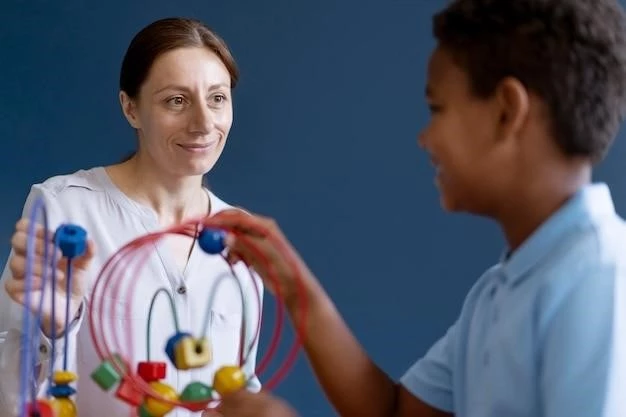Understanding Ataxia
Exploring the complexities of ataxia, from its causes to treatment options.
Definition of Ataxia
Ataxia is a neurological condition characterized by loss of muscle control, affecting coordination, balance, speech, and eye movements. It can result from damage to the cerebellum or nerve pathways involved in motor function.
Types of Ataxia
There are various types of ataxia, including hereditary ataxias (such as Friedreich’s ataxia), acquired ataxias (resulting from injury or illness), sporadic ataxias, and idiopathic late-onset ataxias. Each type presents with specific characteristics and underlying causes.
Causes of Ataxia
Ataxia can be caused by various factors, including genetic mutations, head trauma, stroke, multiple sclerosis, tumors, cerebral palsy, and certain infections. Understanding the underlying cause is crucial for appropriate management and treatment strategies.
Coping Strategies for Living with Ataxia
Empowering individuals with ataxia through adaptive techniques and support.
Adapting Daily Activities
Modifying daily routines and environments to accommodate challenges posed by ataxia. Utilizing assistive devices, organizing tasks for efficiency, and seeking occupational therapy can enhance independence and quality of life.
Mental Health Support
Addressing the emotional impact of ataxia through counseling, therapy, and mindfulness practices. Managing stress, anxiety, and depression is essential for overall well-being and adapting to life with a neurological condition.
Assistive Devices and Aids
Exploring a range of assistive tools such as canes, walkers, adaptive utensils, and speech devices to enhance daily functioning for individuals living with ataxia. These aids provide support and promote independence in various activities.
Latest Research on Ataxia Treatment
Exploring innovative approaches and advancements in the treatment of ataxia.
Medication Developments
Exploring new pharmaceutical interventions and drug therapies aimed at managing symptoms and potentially slowing the progression of ataxia. Research in this area offers hope for improved treatment outcomes and quality of life for affected individuals.
Gene Therapy Advancements
Investigating the potential of gene therapy as a novel approach to treating ataxia by targeting genetic mutations responsible for the condition. Progress in gene therapy research holds promise for developing more targeted and effective treatment strategies for ataxia.
Emerging Therapeutic Approaches
Exploring innovative strategies such as stem cell therapy, neuroprotective agents, and neurorehabilitation techniques in the management of ataxia. These cutting-edge approaches show promise in enhancing neurological function, improving symptoms, and potentially halting disease progression.
Ataxia⁚ Symptoms and Diagnosis
Understanding the signs and diagnostic process for ataxia in individuals.
Common Symptoms of Ataxia
Manifestations of ataxia often include gait disturbances, incoordination, speech difficulties, fine motor skill challenges, and tremors. Recognizing these common symptoms is crucial for timely diagnosis and initiating appropriate management strategies.
Diagnostic Tests for Ataxia
Diagnostic evaluations for ataxia may involve neurological examinations, genetic testing, imaging studies (MRI, CT scans), blood tests, and electromyography. These tests aid in identifying the underlying cause of ataxia and guiding treatment decisions for individuals affected by the condition.
Distinguishing Ataxia from Other Conditions
Given overlapping symptoms, differentiating ataxia from conditions like Parkinson’s disease, stroke, or muscular dystrophy requires comprehensive medical assessments and specialized diagnostic tests. Accurate differentiation is vital for tailored treatment plans and optimal management.
Ataxia in Children⁚ What Parents Need to Know
Understanding and managing ataxia in children, essential information for parents.
Signs and Symptoms in Children
Signs of ataxia in children may present as delayed motor development, unsteady gait, frequent falls, speech difficulties, and tremors. Recognizing these symptoms early is pivotal for timely intervention and management of ataxia in pediatric patients.
Diagnosis and Early Intervention
Timely diagnosis of ataxia in children involves neurological assessments, genetic testing, imaging studies, and pediatric evaluations. Early intervention, including physical therapy and speech therapy, plays a crucial role in enhancing outcomes and quality of life for children with ataxia.
Supporting a Child with Ataxia
Providing emotional support, access to appropriate therapies, educational accommodations, and assistive devices to enhance the well-being and development of children living with ataxia. Building a strong support network and advocating for their needs are paramount for their success.
Nutrition Tips for Managing Ataxia
Exploring dietary strategies to support individuals living with ataxia.
Importance of a Balanced Diet
Consuming a balanced diet rich in nutrients, antioxidants, and fiber is essential for individuals with ataxia. Adequate nutrition supports overall health, energy levels, and may positively impact symptom management and quality of life.
Dietary Modifications for Ataxia
Special attention to texture modifications, food consistency, and hydration levels can support individuals with ataxia in managing swallowing difficulties and ensuring proper nutrition. Customizing diets to individual needs can improve mealtime safety and enjoyment.
Supplements and Vitamins for Ataxia Management
Exploring the role of supplements like vitamin E, coenzyme Q10, and antioxidants in supporting neurological health and potentially alleviating symptoms of ataxia. Consultation with a healthcare provider is crucial for personalized supplementation plans.
Physical Therapy Exercises for Ataxia Patients
Implementing tailored exercises to improve balance, coordination, and mobility.
Benefits of Physical Therapy
Physical therapy offers tailored interventions to enhance strength, flexibility, and coordination. Therapeutic exercises improve functional abilities, promote independence, and help manage symptoms of ataxia, contributing to overall well-being and quality of life.
Specific Exercises for Balance and Coordination
Tailored physical activities like balance drills, gait training, and coordination exercises help ataxia patients improve stability, motor skills, and spatial awareness. Consistent practice can enhance movement control and reduce fall risks, fostering greater mobility and confidence.
Adapting Exercises to Individual Needs
Customizing physical therapy regimens based on unique abilities and limitations of ataxia patients. Tailored exercises address individual challenges, gradually improving coordination, strength, and mobility to maximize therapeutic benefits and adapt to specific needs.

Support Groups for Individuals with Ataxia
Connecting individuals affected by ataxia for mutual support and shared experiences.
Importance of Support Networks
Support networks provide emotional aid, information sharing, and solidarity for individuals with ataxia. Connecting with peers and caregivers in these groups fosters understanding, empathy, and a sense of community, which are vital for navigating the challenges of living with a neurological condition.
Types of Support Groups Available
Diverse support groups cater to various needs, including in-person meetings, online forums, caregiver-specific groups, and condition-specific organizations. These platforms offer a range of resources, advocacy, and social connections to empower individuals and families affected by ataxia.
Accessing Online and In-Person Support Resources
Individuals can access support resources through online platforms, national organizations, local healthcare facilities, and community centers. Both virtual and in-person networks offer valuable information, guidance, and a sense of belonging for those impacted by ataxia.
